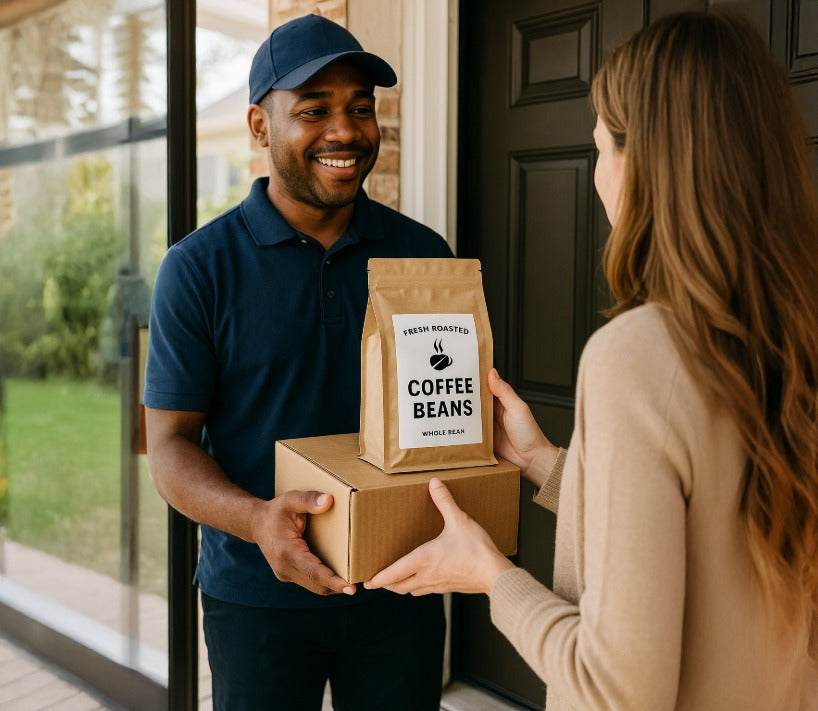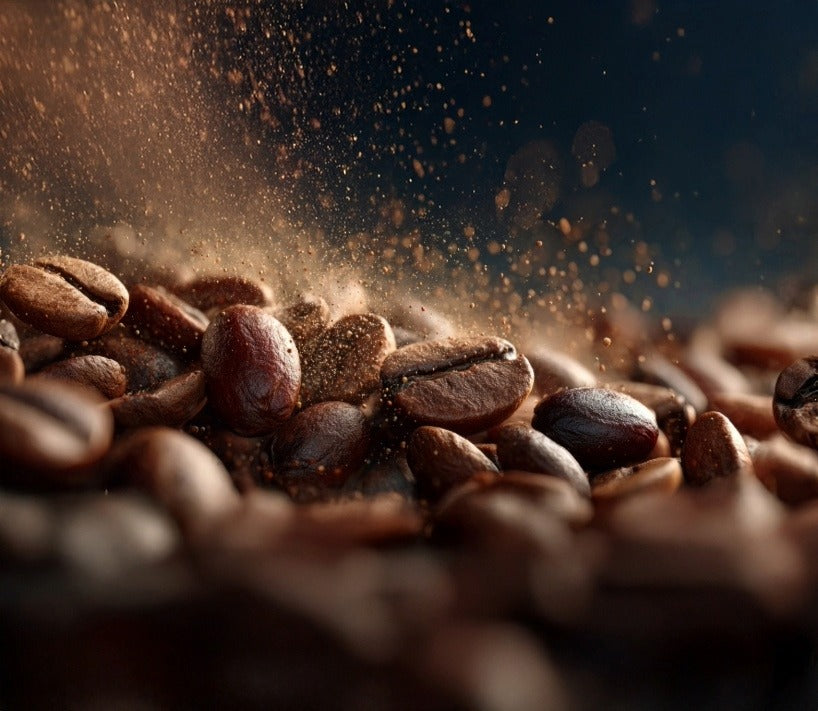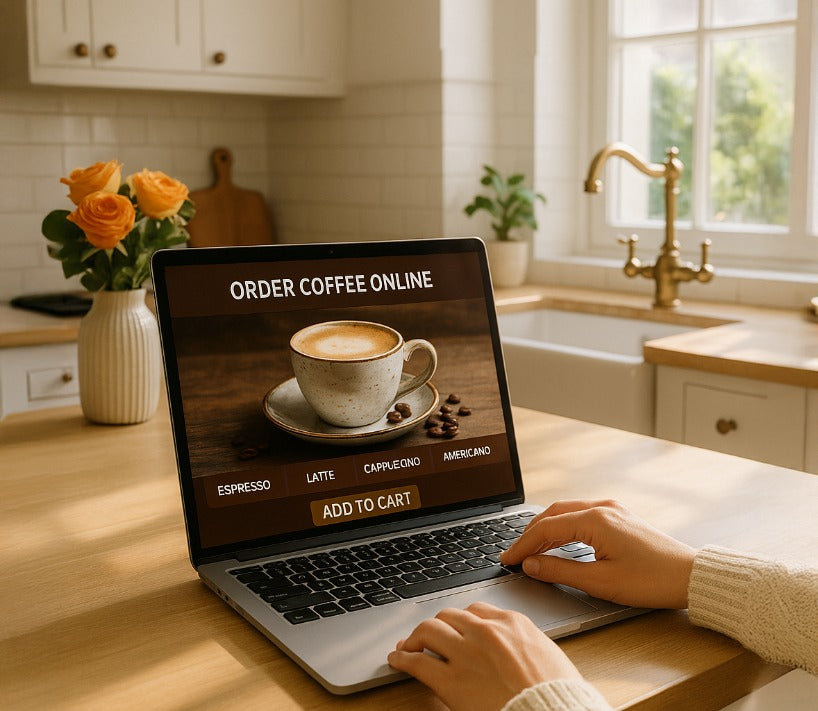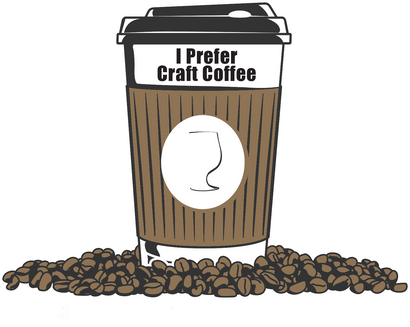Specialty Coffee vs. Chain Coffee: Is the Flavor Worth the Extra Bucks
May 15, 2025 4 min read
Specialty Coffee vs. Chain Coffee: Is the Flavor Worth the Extra Bucks—and Which Home Brew Method Reigns Supreme? ☕️💸
The $4 Question
I remember staring at my grocery-store coffee aisle, eyeing the bargain-bin $4 bag and thinking, “How different can it be?” (Cue ominous music.) Fast-forward to my first sip: bitter, hollow, and strangely reminiscent of burnt plywood. Lesson learned. If you’ve ever wondered whether shelling out a few extra dollars for specialty coffee—the sort many call the best coffee to buy online—is truly worth it, you’re not alone. Add to that the dizzying choice of home brew gadgets (French press? AeroPress? A space-age pourover thingy?!), and the confusion multiplies faster than my caffeine buzz on a Monday morning.
The good news? By the end of this post, you’ll know exactly why high-scoring beans taste better, what makes them cost more, and which brew methods will turn those beans into liquid happiness—all while weaving in a sprinkle of SEO magic so Google can find us as easily as you found that last cookie in the jar.
Facts, Flavor, and Foolproof Brewing
1. The Score That Changes Everything
Let’s start with the nerdy bit: Q-grading. Coffee graded 80+ points on the Specialty Coffee Association’s 100-point scale earns the title specialty. Chain-store blends, on the other hand, often hover around 65-75. Think of it like wine—yes, a $10 bottle might do in a pinch, but a 94-point Burgundy is in a different galaxy.
Why that matters to your taste buds
-
Sweetness & clarity: Specialty beans have balanced sweetness that makes them a good coffee to drink black—no sugar camouflage required.
-
Distinct flavors: From blueberry-jam Ethiopia to chocolate-hazelnut Guatemala, each origin shouts its own personality instead of mumbling generic “coffee taste.”
-
Freshness window: Most indie roasters date-stamp every bag so you know it was roasted last week—not last fiscal quarter. If you’ve Googled where can I buy fresh coffee beans near me, that roast date is your North Star.
2. Breaking Down the Price Myth
“Specialty is too expensive!”—I hear this a lot, so let’s crunch numbers:
| Item | Bag Size | Cost per Bag | Grams per 10 oz cup | Cost per Cup |
|---|---|---|---|---|
| Big-Box Chain Blend | 12 oz | $9 | 18 g | ~43¢ |
| Indie Specialty Roast | 12 oz | $18 | 18 g | ~87¢ |
Even at almost double the price per bag, you’re still under a buck a cup—cheaper than a chain latte, and worlds tastier. That’s why many fans see high-quality beans as the best tasting whole bean coffee investment, not a splurge.
Pro Tip: If you divide cost per cup by the number of “Oh wow!” moments each sip delivers, specialty often comes out cheaper in the long run. (Totally scientific, trust me.)
3. Brewing Showdown: Which Method Fits You?
Below is your quick-fire guide to turning the best small batch coffee into your daily bliss without needing a barista certification.
| Method | Gear Needed | Flavor Profile | Difficulty |
|---|---|---|---|
| French Press | Press pot, kettle | Heavy body, rich oils | Beginner-friendly |
| Automatic Drip | Basic brewer | Balanced & clean | Set-it-and-forget-it |
| AeroPress | AeroPress, paper filters | Sweet, low-acid shot or cup | Medium (2-min brew) |
| Pour-Over (V60 or Kalita) | Cone, filters, scale | Bright, nuanced, café vibes | Nerd-approved |
| Espresso Machine | Semi-auto machine, grinder | Intense, syrupy, café-style | Advanced (but fun) |
| Cold Brew | Jar or Toddy, fridge | Smooth, chocolatey, low-acid | Patience game (12 h) |
My Two Cents
-
Simplicity lovers: French press = plunge-and-play.
-
Flavor chasers: Pour-over extracts every note; perfect for showcasing best espresso beans in filter form.
-
Jet-fuel fans: Espresso at home is a commitment (and a rabbit hole), but unbeatable for lattes.
No matter your weapon of choice, start with freshly ground (ideally minutes before brewing). Burr grinders beat blade grinders, and weighing coffee beats eyeballing—your taste buds can tell.
4. Storage & Shelf Life: Keepin’ It Fresh
Once your top coffee delivered hits the doorstep:
-
Cool, dark, airtight: Skip the fridge; moisture is coffee’s enemy.
-
Use within 3–4 weeks: Flavor peaks around days 4–14 after roast.
-
Freeze only if necessary: In sealed bags, large batches can hibernate for a month—just thaw once.
Follow these steps and even the best specialty coffee online will stay vibrant till the last bean.
Your Path to Café-Quality Coffee at Home
Taste the Difference, Feel the Confidence
Armed with Q-grade facts, per-cup math, and the ultimate brew cheat-sheet, you can now decide if specialty’s price tag is worth it. (Spoiler: it is.) You’ll know why a best coffee to buy online online search brings up so many rave reviews, and how the flavors truly justify the investment.
Checklist for Your Next Bag
-
Check the roast date—fresh equals flavor.
-
Look for origin transparency—farmer, altitude, process.
-
Choose a brew method that matches your lifestyle (lazy Sunday? Pour-over. Tuesday morning rush? Auto-drip).
-
Experiment—taste side-by-side with chain beans. Your palate will do the convincing.
-
Share the joy—great coffee makes a stellar gift for coffee lover friends or memorable coffee beans as a gift for that foodie uncle.
Final Sip
Whether you’re after the best craft coffee at home, the best coffee online for weekend brunch, or just an upgrade on your daily jolts, specialty beans deliver unmatched flavor and an experience worth savoring. And hey—if someone still claims chain coffee is “good enough,” hand them a cup brewed from fresh high-scoring beans. Odds are you’ll convert another believer to the bright side of the mug.
Now, fire up that kettle, cue your favorite playlist, and celebrate knowing you’ve cracked the code to coffee greatness—without needing a second mortgage or a degree in latte art. Cheers to better mornings, one glorious, specialty-brewed sip at a time!
Also in Best Coffee To Buy Online Education

Best Fresh Roasted Coffee Delivery Online
November 28, 2025 4 min read
I roast the best tasting coffee at home for you! I use 100% electric equipment, so no hydrocarbons here. Best fresh roasted coffee delivery starts with high-scoring specialty coffee online.

Which Roaster Makes Better Coffee: Gas or Electric?
November 27, 2025 4 min read
Why electric drum roasters produce cleaner, sweeter, more consistent coffee—especially the kind you want when buying fresh roasted coffee beans online or trying to make the best tasting craft coffee at home.

Biggest Coffee Buying Mistake at Home
November 26, 2025 4 min read
Learn why the roast date matters and how to buy fresh, high-quality specialty coffee online. No guesswork when you order coffee online with me. I only stock, roast, and process the best tasting craft coffee at home. I am YOUR personal roaster.
